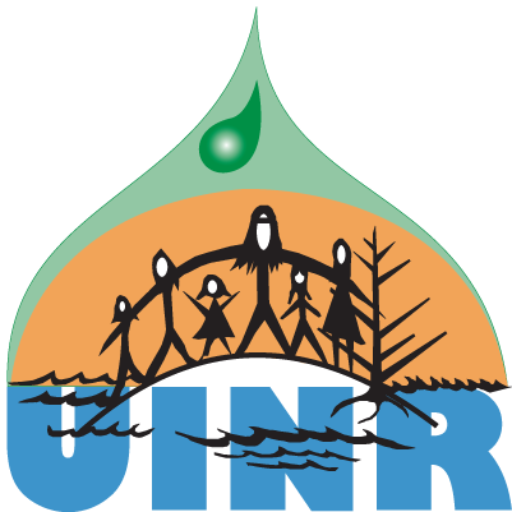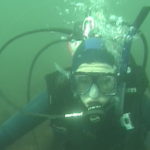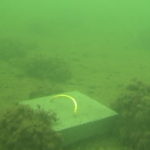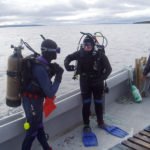 The Unama’ki Institute of Natural Resources (UINR) was successful in bidding for an artificial habitat to be put in East Bay in the Bras d’Or Lakes (Lobster Fishing Area 28). Three hundred and twenty-four specially constructed concrete blocks were put into the Lake in October 2005 to become habitat for young lobsters that may not be able to find suitable natural shelter for protection from prey. Not only do the blocks provide shelter for lobster, it is anticipated that it will increase overall productivity of the area by providing substrate for seaweeds and shellfish such as mussels and protection for small fish.
The Unama’ki Institute of Natural Resources (UINR) was successful in bidding for an artificial habitat to be put in East Bay in the Bras d’Or Lakes (Lobster Fishing Area 28). Three hundred and twenty-four specially constructed concrete blocks were put into the Lake in October 2005 to become habitat for young lobsters that may not be able to find suitable natural shelter for protection from prey. Not only do the blocks provide shelter for lobster, it is anticipated that it will increase overall productivity of the area by providing substrate for seaweeds and shellfish such as mussels and protection for small fish.
Some areas in the Bras d’Or Lakes have limited habitat for lobsters, especially East Bay. Areas rich in a mixture of gravel, cobble and boulder support lucrative lobster fisheries partly because of their ability to provide protection for future recruits to the lobster fishery. The effects of artificial reefs are not immediate. It may take up to an entire generation of lobsters (five to seven years, maybe as long as ten) to become evident to the local fishers. However, adding habitat is the first step toward enhancing the local lobster population.
Before the reefs could be deployed, Eskasoni Fish & Wildlife Commission (EFWC) and UINR teamed up to conduct the “before” assessment. Biologists Shelley Denny and Allison McIsaac, with the assistance of Dean Denny and Allan Stevens, completed the SCUBA assessment of the reef area for the East Bay reef. They also completed two other “before” assessments for the other sites on the Atlantic coast in River Bourgeois, Nova Scotia where a similar reef was deployed. Using a 100 metre lead line divided into 10 metre sections, 400 metres of the bottom was surveyed by describing the bottom type and counting and measuring all lobsters in their path. Many transects were completed for each reef sites.  Next year, they will follow up with the “after†assessment to determine if the reef structures increased the numbers of lobsters found in the area. Meanwhile, both organizations are jointly pursuing funding for long-term monitoring and research of the reef area.
Deployment of the reef blocks was completed with the help of Dean Denny, Allan Stevens, Allan Jeddore, Dale Stevens and George Denny. Funding for the assessment, reef material and deployment was provided by the Habitat Compensation Fund through Public Works Canada.
From UINR Marten – Vol.1. Issue.2 – Winter 2005



